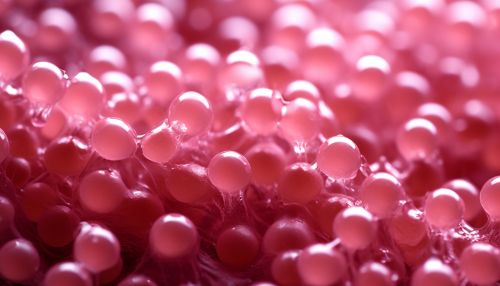Radiation-resistant organism
Introduction
Radiation-resistant organisms, also known as radiotrophs, are a group of extremophilic organisms that can survive and even thrive in environments with high levels of ionizing radiation. These organisms have evolved a variety of mechanisms to repair the damage caused by radiation to their DNA and other cellular components. This article will delve into the biology, mechanisms of radiation resistance, and potential applications of these fascinating organisms.
Biology of Radiation-Resistant Organisms
Radiation-resistant organisms can be found in all three domains of life: Bacteria, Archaea, and Eukarya. These organisms are typically extremophiles, meaning they can survive in extreme environments that are inhospitable to most forms of life. Some of the most well-known radiation-resistant organisms include the bacterium Deinococcus radiodurans and the tardigrade, or water bear (Hypsibius dujardini).


Deinococcus radiodurans, often referred to as the world's toughest bacterium, is capable of withstanding doses of radiation a thousand times greater than would be lethal to most other organisms. Similarly, tardigrades are renowned for their ability to survive in extreme conditions, including high levels of radiation, deep-sea trenches, and even the vacuum of space.
Mechanisms of Radiation Resistance
Radiation-resistant organisms have evolved a variety of mechanisms to cope with the damaging effects of ionizing radiation. These mechanisms include DNA repair, protective pigments, and metabolic adaptations.
DNA Repair
One of the primary effects of ionizing radiation is the induction of DNA damage, including single and double-strand breaks. To survive in high-radiation environments, radiation-resistant organisms have evolved highly efficient DNA repair mechanisms. For example, Deinococcus radiodurans is capable of repairing hundreds of double-strand breaks in its DNA within a few hours of exposure to radiation.
Protective Pigments
Some radiation-resistant organisms produce pigments that can absorb and neutralize radiation. For instance, Deinococcus radiodurans produces a carotenoid pigment that gives the bacterium its distinctive pink color and helps protect it from radiation.
Metabolic Adaptations
Radiation-resistant organisms often exhibit metabolic adaptations that help them survive in high-radiation environments. These adaptations may include the ability to survive in a dormant state, known as cryptobiosis, during periods of high radiation, and the ability to metabolize unusual substrates, such as radioactive materials.
Potential Applications of Radiation-Resistant Organisms
The unique properties of radiation-resistant organisms have potential applications in a variety of fields, including biotechnology, medicine, and space exploration.
In biotechnology, the robust DNA repair mechanisms of radiation-resistant organisms could be harnessed for the development of new DNA repair enzymes and therapeutics. In medicine, these organisms could be used to study the effects of radiation on biological systems and to develop new treatments for radiation-induced damage.
In the field of space exploration, radiation-resistant organisms could play a role in the search for extraterrestrial life. The ability of these organisms to survive in extreme environments, including high-radiation environments, suggests that life may be possible in similarly extreme environments elsewhere in the universe.
